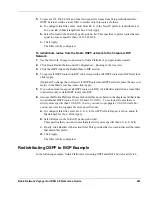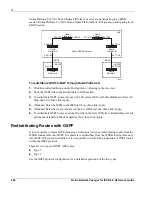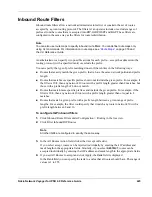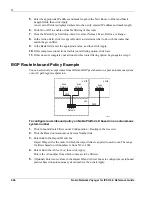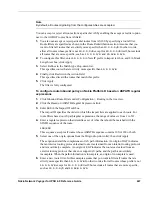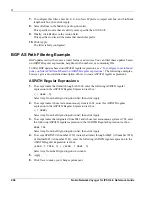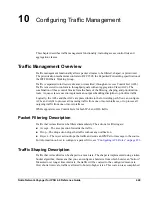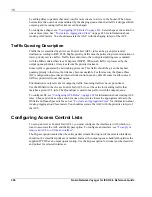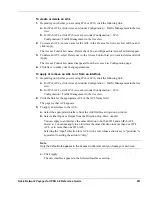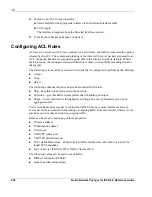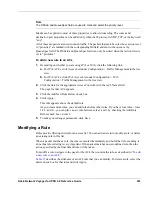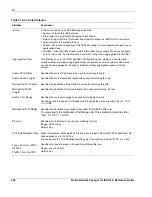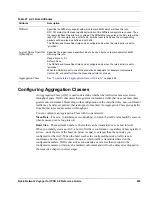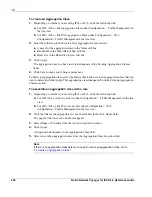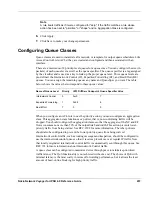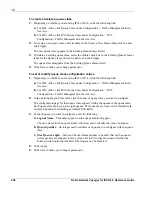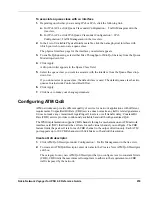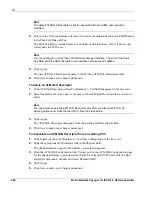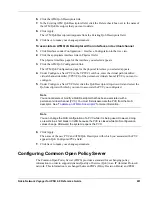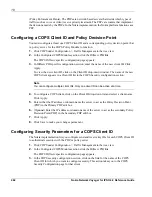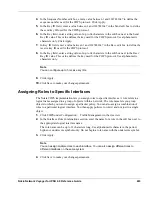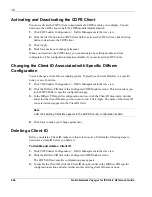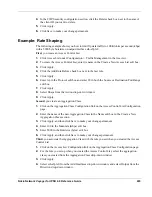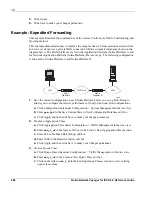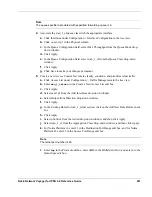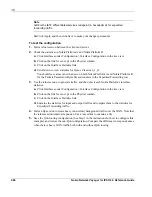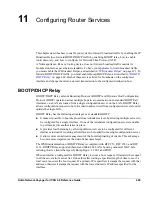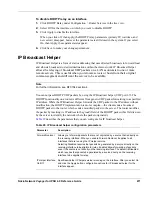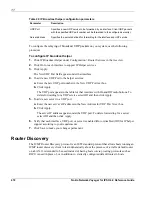
Nokia Network Voyager for IPSO 4.0 Reference Guide
457
Note
A rule treats traffic as if it were configured for "skip," if the traffic matches a rule whose
action has been set to "prioritize" or "shape" and no Aggregation Class is configured.
6.
Click Apply.
7.
Click Save to make your changes permanent.
Configuring Queue Classes
Queue classes are used to instantiate a framework, or template, for output queue schedulers. Like
Access Control Lists (ACLs) they are created and configured and then associated with an
interface.
There are a maximum of 8 priority-level queues for a queue class. You can configure the size (in
packets) of each queue level as well as the queue specifier. The queue specifier is a tag assigned
by the classifier and is used as a key to look up the proper queue level. Three queue levels are
pre-defined: the Internetwork Control (IC), Expedited Forwarding (EF), and Best Effort (BE)
queues. You can assign the remaining queues any name and QueueSpec you want. The table
below shows the values that correspond to these queue values:
When you configure an ACL rule to use the priority action, you must configure an aggregation
class. This aggregation class functions as a policer, that is, non-conforming traffic will be
dropped. You should configure the aggregation classes so that the aggregate of the NC and EF
flows consumes no more than 50% of the output link bandwidth. This action prevents lower-
priority traffic from being starved. See RFC 2598 for more information. The other policers
should also be configured to prevent the lower-priority queue from being starved.
Internetwork control traffic, such as routing messages and keepalives, should be configured to
use the internetwork control queue so that it receives precedence over regular IP traffic. Note
that locally originated internetwork control traffic is automatically sent through this queue. See
RFC 791 for more information about Internetwork Control traffic.
A queue class can be configured to maximize device throughput or to minimize prioritized
traffic latency. The QoS functionality is not achieved without a cost. The choice of QoS with
minimal latency is the most costly in terms of forwarding performance, but it allows the least
amount of head-of-line blocking for high priority traffic.
Name of Queue Level
Priority
IETF DiffServ Codepoint Queue Specifier Value
Internetwork Control
0
0xc0
7
Expedited Forwarding
1
0xb8
6
Best Effort
7
0
0
Summary of Contents for IPSO 4.0
Page 4: ...4 Nokia Network Voyager for IPSO 4 0 Reference Guide ...
Page 182: ...3 182 Nokia Network Voyager for IPSO 4 0 Reference Guide ...
Page 206: ...4 206 Nokia Network Voyager for IPSO 4 0 Reference Guide ...
Page 248: ...5 248 Nokia Network Voyager for IPSO 4 0 Reference Guide ...
Page 266: ...6 266 Nokia Network Voyager for IPSO 4 0 Reference Guide ...
Page 286: ...7 286 Nokia Network Voyager for IPSO 4 0 Reference Guide ...
Page 350: ...8 350 Nokia Network Voyager for IPSO 4 0 Reference Guide ...
Page 478: ...11 478 Nokia Network Voyager for IPSO 4 0 Reference Guide ...

